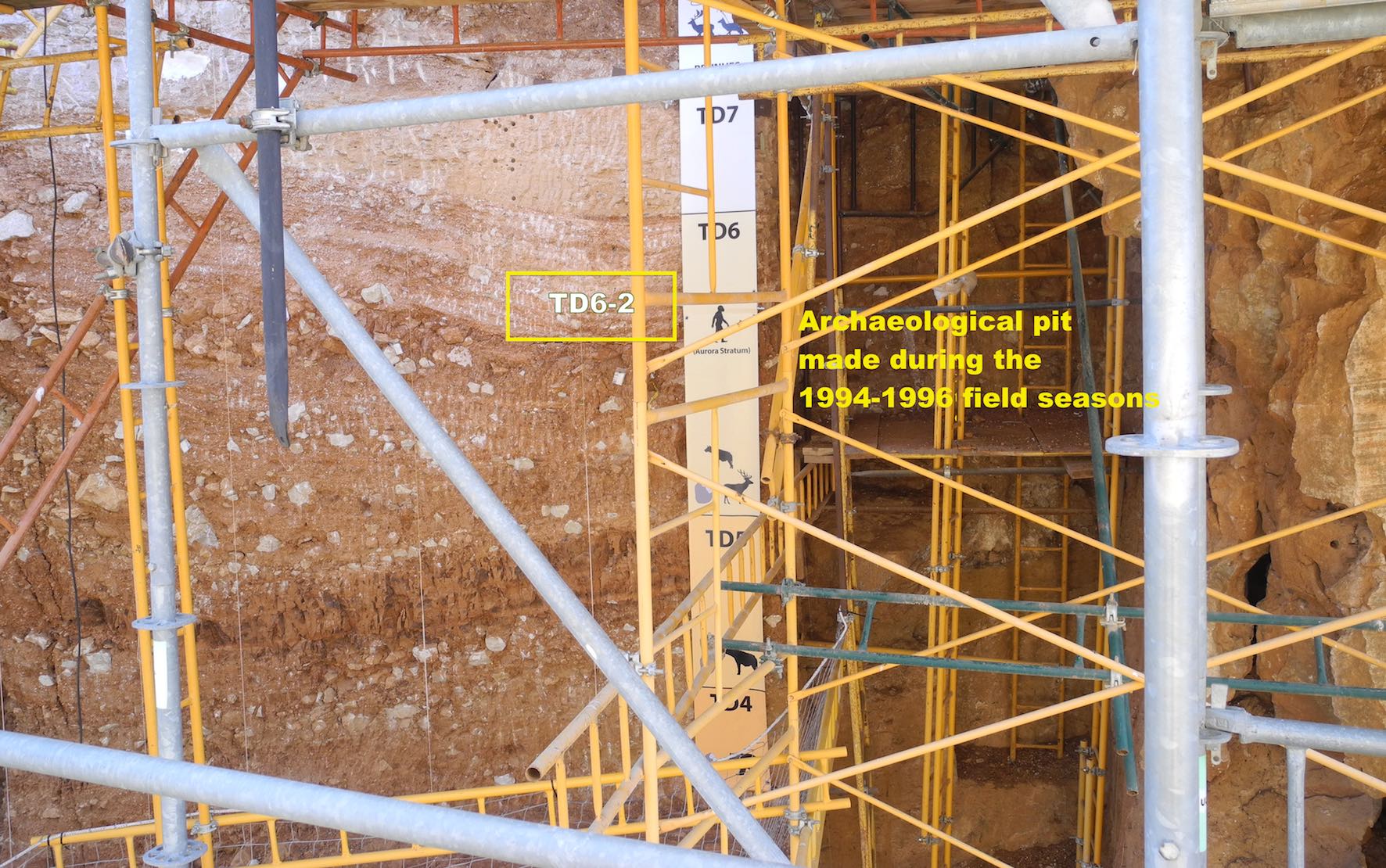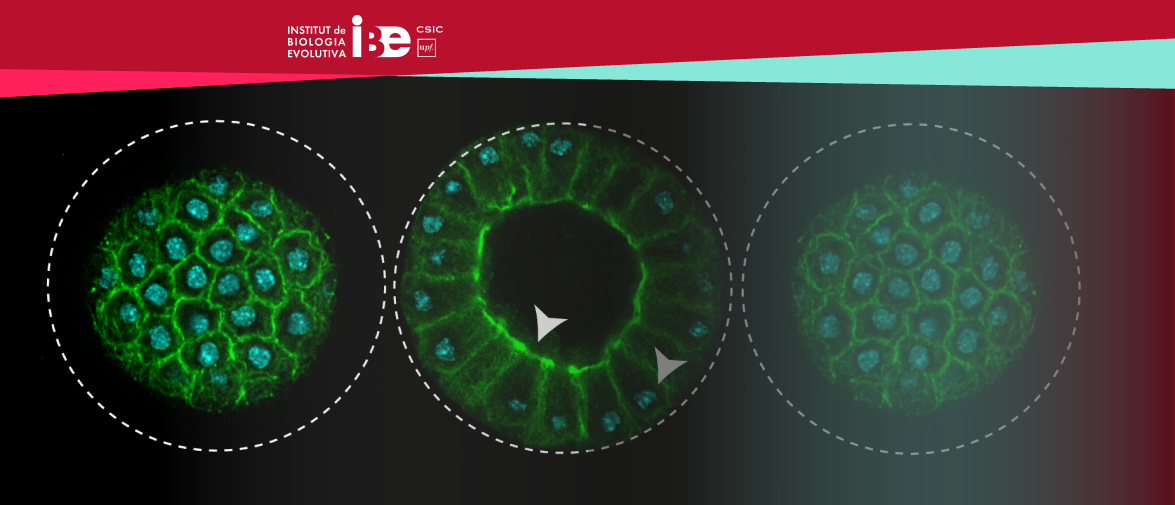La evidencia genética más antigua obtenida hasta la fecha clarifica una parte de la genealogía humana
La evidencia genética más antigua obtenida hasta la fecha clarifica una parte de la genealogía humana
Por primera vez se ha recuperado material proteínico de una especie humana, que vivió en Europa hace unos 800,000 años. Los resultados obtenidos en la Universidad de Copenhague arrojan luz sobre uno de los puntos más interesantes de genealogía humana, alcanzando una antigüedad muy superior a la que la conseguida hasta la fecha mediante la obtención de ADN.
 Se ha logrado un avance importante en los estudios de evolución humana, después de que los científicos recuperaran uno de los conjuntos de datos genéticos humanos más antiguos conseguidos hasta el momento. El logro se ha obtenido tras analizar un diente de 800.000 años de antigüedad, perteneciente a la especie Homo antecessor.
Se ha logrado un avance importante en los estudios de evolución humana, después de que los científicos recuperaran uno de los conjuntos de datos genéticos humanos más antiguos conseguidos hasta el momento. El logro se ha obtenido tras analizar un diente de 800.000 años de antigüedad, perteneciente a la especie Homo antecessor.
Los hallazgos realizados por científicos de la Universidad de Copenhague (Dinamarca), en colaboración con colegas del Centro Nacional de Investigación sobre la Evolución Humana (CENIEH-ICTS) de Burgos, así como de otras instituciones incluyendo el Instituto de Biología Evolutiva (IBE, CSIC-Universitat Pompeu Fabra) en Barcelona, se publican hoy día 1 de abril de 2020 en la prestigiosa revista Nature.
“El análisis de proteínas antiguas proporciona evidencia de una estrecha relación entre Homo antecessor, los neandertales, los humanos modernos y los Denisovanos. Nuestros resultados respaldan la idea de que Homo antecesor era un grupo hermano del conjunto de homínidos que contenía a Homo sapiens, Homo neanderthalensis y Denisovanos, y debemos suponer que los árboles filogenéticos que hemos obtenido describen bien las relaciones de parentesco entre estos grupos de homínidos", afirma Frido Welker, investigador postdoctoral en el Globe Institute, Universidad de Copenhague y primer autor del artículo.
Un equipo de investigación liderado por la Universidad de Copenhague (Dinamarca) y el Centro Nacional de Investigación sobre la Evolución Humana (CENIEH-ICTS) de Burgos y con la participación del Instituto de Biología Evolutiva (IBE, CSIC-Universitat Pompeu Fabra) en Barcelona ha recuperado uno de los conjuntos de datos genéticos humanos más antiguos conseguidos a fecha de hoy. El logro se ha obtenido después de analizar un diente de 800.000 años de antigüedad, perteneciente a la especie Homo antecessor.
Reconstruyendo el árbol genealógico humano

Mediante el uso de una técnica llamada espectrometría de masas, los investigadores secuenciaron proteínas antiguas del esmalte de los dientes y determinaron de manera muy precisa la posición de Homo antecesor en el árbol genealógico humano.
El nuevo método, desarrollado por investigadores de la Facultad de Ciencias Médicas y de la Salud de la Universidad de Copenhague, permite a los científicos recuperar evidencia molecular para reconstruir con precisión la evolución humana desde tiempos a los que todavía no teníamos acceso.
Las respectivas genealogías de chimpancés y humanos divergieron hace entre nueve y siete millones de años. Desde que tenemos ese dato, los científicos se han afanado en comprender mejor las relaciones evolutivas entre los humanos modernos y todas las demás especies de nuestro linaje, de las que solo nos quedan sus restos fósiles.
“Mucho de lo que sabemos hasta ahora se basa en los resultados del análisis de ADN antiguo o en observaciones de la forma y la estructura física de los fósiles. Debido a la degradación química del ADN a lo largo del tiempo, el material genético humano más antiguo recuperado hasta la fecha apenas supera los 400,000 años”, explica Enrico Cappellini, profesor asociado del Globe Institute, Universidad de Copenhague, y responsable principal del grupo de investigación.
La nueva técnica paleoproteómica permite a los científicos recuperar evidencias moleculares para reconstruir con precisión la evolución humana desde tiempos a los cuales todavía no se tenía acceso.
"Ahora, el análisis de proteínas antiguas con espectrometría de masas, un enfoque comúnmente conocido como paleoproteómica, nos permite superar estos límites", agrega.
Teorías sobre la evolución humana
Los fósiles analizados por los investigadores fueron encontrados en 1994 por el equipo dirigido por Juan Luis Arsuaga, José María Bermúdez de Castro y Eudald Carbonell en el nivel estratigráfico TD6 del yacimiento de la Gran Dolina, uno de los sitios arqueológicos y paleontológicos de la sierra de Atapuerca, en Burgos, España. Las observaciones iniciales llevaron a concluir que Homo antecesor fue el último antepasado común de los neandertales y los humanos modernos, una conclusión basada en la morfología de los fósiles. Durante años, la relación exacta entre Homo antecessor y otros grupos humanos, como nosotros mismos y los neandertales, se ha discutido intensamente entre los expertos. Aunque la hipótesis de que Homo antecessor podría ser el ancestro común de los neandertales y los humanos modernos es muy difícil de encajar en el escenario evolutivo del género Homo, los nuevos hallazgos en TD6 y estudios posteriores revelaron varios caracteres compartidos entre las especies humanas encontradas en Atapuerca y los Neandertales. Además, estudios adicionales confirmaron que las características faciales del Homo antecessor son muy similares a las del Homo sapiens y muy diferentes de las de los neandertales y sus antepasados más recientes.
“Me alegro de que el estudio de proteínas proporcione evidencia sobre la posible relación entre Homo antecessor, el ancestro común de los neandertales, los humanos modernos y los denisovanos. Las características compartidas por Homo antecessor con estos homínidos aparecieron claramente mucho antes de lo que se pensaba. Por lo tanto, Homo antecessor podría ser una especie basal de la humanidad emergente que dieron lugar a neandertales, denisovanos y humanos modernos”, agrega José María Bermúdez de Castro, codirector científico de las excavaciones en Atapuerca y coautor correspondiente del artículo.
El estudio de proteínas de los fósiles analizados de Homo antecessor, que fueron encontrados el 1994 en el nivel estratigráfico TD6 del yacimiento de la Gran Dolina (sierra de Atapuerca), proporciona evidencia sobre una posible relación estrecha entre Homo antecessor, el ancestro común de los neandertales, los humanos modernos y los denisovanos.
Colaboración interdisciplinar

Resultados como estos son posibles gracias a una amplia colaboración entre diferentes campos de investigación, desde paleoantropología hasta la bioquímica, proteómica y genómica de poblaciones, así como entre diferentes instituciones.
La recuperación de material genético antiguo de los especímenes fósiles muy escasos requiere experiencia y equipos de alta calidad. Esta es la razón que está detrás de la colaboración estratégica de diez años entre Enrico Cappellini y Jesper Velgaard Olsen, profesor del Centro de Investigación de Proteínas de la Fundación Novo Nordisk de la Universidad de Copenhague y coautor del artículo.
“Este estudio es un hito emocionante en paleoproteómica. Utilizando una técnica vanguardista de espectrometría de masas, determinamos la secuencia de aminoácidos de los restos de proteínas del esmalte dental de Homo antecessor. Luego podemos comparar las antiguas secuencias de proteínas que "leemos" con las de otros homininos, por ejemplo, los neandertales y Homo sapiens, para determinar cómo están genéticamente relacionados", dice Jesper Velgaard Olsen."Realmente espero ver lo que la paleoproteómica revelará en el futuro", concluye Enrico Cappellini.
El estudio de la evolución humana por paleoproteómica continuará en los próximos años a través del proyecto iniciado recientemente: “Palaeoproteomics to Unleash Studies on Human History (PUSHH)”, financiado por la Unión Europea y al que pertenecen muchos de los coautores del artículo.
"La recuperación de muestras moleculares de fósiles muy antiguos combinada con las nuevas técnicas computacionales ha supuesto una revolución en la manera de entender la relación de especies que ya no están entre nosotros. Muchos investigadores de este estudio estamos involucrados en una red europea de trabajos evolutivos, y los próximos años prometen ser fascinantes", comenta Tomàs Marquès-Bonet, director del Instituto de Biología Evolutiva (IBE, CSIC-Universidad Pompeu Fabra) con doble afiliación en el Centro Nacional de Análisis Genómico (CNAG-CRG) del Centro de Regulación Genómica (CRG) y coautor del artículo.
"La recuperación de muestras moleculares de fósiles muy antiguos combinada con las nuevas técnicas computacionales ha supuesto una revolución en la manera de entender la relación de especies que ya no están entre nosotros. Los próximos años prometen ser fascinantes", comenta Tomàs Marquès-Bonet, director del Instituto de Biología Evolutiva (IBE, CSIC-Universitat Pompeu Fabra) y coautor del artículo.
"En 1997, los investigadores de Atapuerca abrieron un debate científico enorme sobre el papel de Homo antecessor y ahora lo hemos cerrado desde donde no se podía soñar en aquella época, desde la paleoproteómica. Esperamos que la misma técnica cierre muchos más debates en el futuro", añade Carles Lalueza-Fox, investigador principal del IBE y coautor del artículo.
"En 1997, los investigadores de Atapuerca abrieron un debate científico enorme sobre el papel de Homo antecessor y ahora lo hemos cerrado desde donde no se podía soñar en aquella época, desde la paleoproteòmica. Esperamos que la misma técnica cierre muchos más debates en el futuro", añade Carles Lalueza-Fox, investigador principal del IBE y coautor del artículo.
La investigación está financiada principalmente por VILLUM FONDEN, la Fundación Novo Nordisk, "la Caixa" y los programas de la Red Internacional de Becas y Formación Internacional Marie Sklowowska-Curie Actions.
Por el Centro Nacional de Investigación sobre la Evolución Humana (CENIEH-ICTS) de Burgos, ha participado en la investigación José María Bermúdez de Castro (como autor correspondiente) y María Martinón. Las investigaciones y excavaciones de los yacimientos de la sierra de Atapuerca están siendo financiadas por el Ministerio de Ciencia, Innovación y Universidades, la Junta de Castilla y León y la Fundación Atapuerca.
Artículo de referencia: F. Welker et.al. The dental proteome of Homo antecessor. Nature; Abril 2020. DOI: https://doi.org/10.1038/s41586-020-2153-8






















